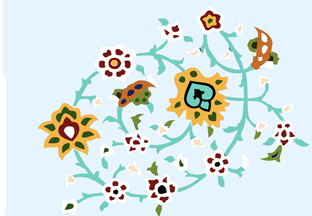World Cultures
Fort Bend ISD
- Cultural Celebrations
Author: Peter Yackus
Audience: 3rd Grade (applicable K-2)
Description: The study of cultures and their celebrations is a focus of several grade levels. To help students gain an understanding of the different beliefs and traditions of these cultures this lesson has students looking at three different celebrations based on three different cultures. The students then use the information to write letters to each other explaining a celebration and then asking for the recipient to explain a culture back.
TEKS: K.11 Culture. The student understands similarities and differences among people. The student is expected to: (B) identify differences among people. K.12 Culture. The student understands how people learn about themselves through family customs and traditions. The student is expected to: (A) identify family customs and traditions and explain their importance; (B) compare family customs and traditions 1.15 Culture. The student understands the importance of family beliefs, customs, language, and traditions. The student is expected to: (A) describe various beliefs, customs, and traditions of families and explain their importance; 3.12 Culture. The student understands ethnic and/or cultural celebrations of the United States and other nations. The student is expected to: (A) explain the significance of selected ethnic and/or cultural celebrations in Texas, the United States, and other nations such as St. Patrick’s Day, Cinco de Mayo, and Kwanzaa; and (B) compare ethnic and/or cultural celebrations in Texas, the United States, and other nations
Unit Recommendation: Social Studies
Download: Lesson Plan
- “Golden Age” of the Islamic World
Author: Melissa Cohen-Nickels
Audience: 6th Grade
Description: There were astonishing achievements by Muslim scholars and scientists during the period from approximately 750 to 1050 A.D. This period is called a “Golden Age” of the Islamic World. Great advances were made in the Abbasid Islamic Empire (with its capital in Baghdad) even up to 1258 when the Mongols invaded the empire and destroyed its capital. Great achievements also continued in Muslim Spain, in Cairo, Egypt at later time periods, but the glorious “Golden Age” was the best period for science and mathematics. These achievements greatly influenced learning in Europe, as well. Without the Muslim achievements at this time, much of the learning from ancient Greece, Rome, and Egypt would have been lost forever.
The following lesson helps the students explore some of the achievements of the Muslim scholars and scientists. They will then have to decide which invention or innovation was the most important and create a magazine cover and write an article describing the innovation or achievement.
TEKS: (2) History. The student understands the contributions of individuals and groups from various cultures to selected historical and contemporary societies. (A) explain the significance of individuals or groups from selected societies, past and present; and (B) describe the influence of individual and group achievement on selected historical or contemporary societies. (17) Culture. The student understands relationships that exist among world cultures. (A) explain aspects that link or separate cultures and societies; (18) Culture. The student understands the relationship that exists between artistic, creative, and literary expressions and the societies that produce them. (A) explain the relationships that exist between societies and their architecture, art, music, and literature; (B) relate ways in which contemporary expressions of culture have been influenced by the past;
(C) describe ways in which societal issues influence creative expressions; identify examples of art, music, and literature that have transcended the boundaries of societies and convey universal themes. (20) Science, technology, and society. The student understands the relationships among science and technology and political, economic, and social issues and events.
(A) give examples of scientific discoveries and technological innovations, including the roles of scientists and inventors, that have transcended the boundaries of societies and have shaped the world
Unit Recommendation: World Cultures
Download: Lesson Plan | Handout #1 | Handout #2 | Handout #3 | Handout #4
Houston ISD
La Joya ISD
- Three Great Monotheisms
Author: Monica Chavez
Presented: June 19, 2009 and August 7, 2009 at Jimmy Carter High School, La Joya ISD
Audience: La Joya ISD teachers and staff
Description: By comparing the world’s major religions, students can appreciate the similarities that are present in them. This can be used as a lesson review and/or refresher or as a quiz.
TEKS: 10.16 Culture: student understands how the components of culture affect the way people live and shape the characteristics of regions, (b) give examples of ways various groups of people view cultures, places, and regions differently; 10.17 Culture: student understands the distribution, patterns, and characteristics of different cultures, (a) describe and compare patterns of culture such as language, religion, land use, systems of education, and customs that make specific regions of the world distinctive
Unit Recommendation: World Cultures/Religion
Download: Pwpt Presentation | Pwpt Worksheet | Three Great Monotheisms | Similarities Holy Books
Pflugerville ISD
Round Rock ISD
San Antonio ISD
